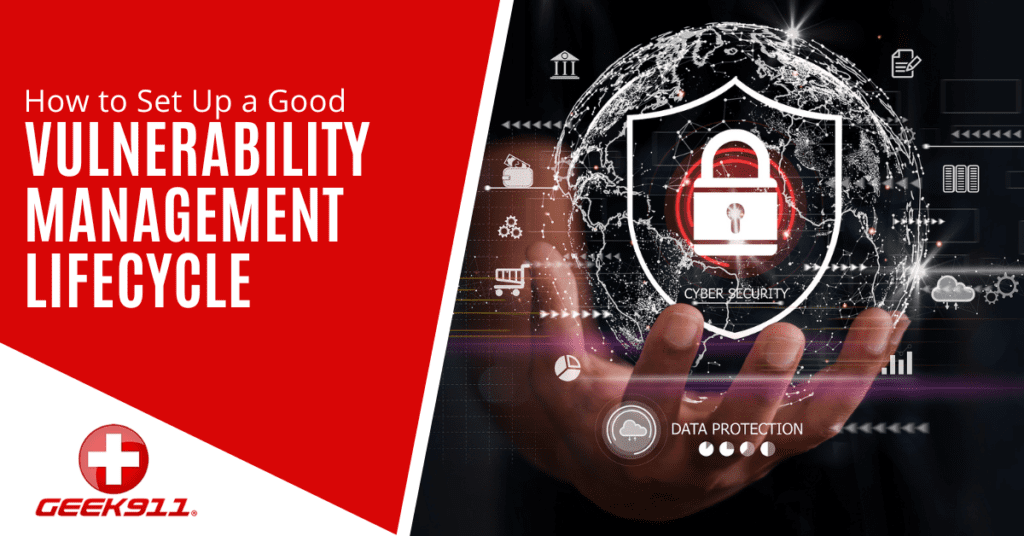How to Set Up a Good Vulnerability Management Lifecycle

A vulnerability in business security is a weakness that enables a cybercriminal to breach the data security of a system. An exposure has three components; a system flaw, access by a cybercriminal, and the criminal’s ability to use a technique or tool to expose the loopholes.
Vulnerability management is a must-have in any business security plan. Organizations can discover vulnerabilities in their IT system using the vulnerability management lifecycle to prioritize assets, evaluate, report, and repair the vulnerabilities, and confirm that they have been fixed.
Vulnerability management should be continuous because the business landscape is highly dynamic, and numerous attacks and threats are released daily. According to a report by Statista, in the previous year, over 22.5 thousand new vulnerabilities were identified.
Therefore, to ensure that all of these elements of the existing IT environment are regularly set to reduce potential vulnerabilities, businesses should set up an excellent vulnerability management lifecycle. But how can businesses set up a good vulnerability management lifecycle, and what’s its importance?
How Businesses Can Set Up an Excellent Vulnerability Management Lifecycle
Below are practical steps needed to set up a fantastic vulnerability management lifecycle:
- Categorize vulnerabilities
Businesses can get a comprehensive perspective of these loopholes through network scanning by identifying and categorizing potential vulnerabilities.
Based on assets and vulnerability severity levels, threats can be divided into three categories; high, medium, and low. Furthermore, remediation items can be prioritized according to the impact level.
One of the best methods for addressing vulnerabilities is through this procedure, which not only aids in risk factor prioritization but also generates quantitative measurements for deeper insights.
Create a report using the outlines below:
- Identified vulnerabilities
- Levels of prioritization
- Recommendations for managing them
Include specific instructions that’ll clearly explain what the remediation team should do to eliminate vulnerabilities and reduce risks. Scan results are delivered based on the customer’s requirements monthly, weekly, or daily.
- Implement an IR Plan (Incident Response Plan)
One significant component of vulnerability management is the Incident Response Plan. It is a timely reaction that can mitigate the possible impact of cybersecurity threats. The IR Plan (Incident Response Plan) uses proactive steps to ensure the remediation team is prepared to address new threats and respond to breaches. Automated processes, continuous monitoring, and prioritized signals are necessary for prompt incident response.
- Implement regular scans
Regular scanning allows for the detection of newly introduced vulnerabilities in a network. To minimize the probability of an attack, vulnerabilities must be found quickly and fixed.
Assigning the proper resources for managing and identifying new cyber vulnerabilities and network security is one technique to help protect the network. All repairs and upgrades can be implemented instantly and correctly with a suitable configuration.
Another strategy is to evaluate the organization’s current security setups, tools, programs, and procedures using security scanners to find and address any weaknesses. Businesses should adopt proactive solutions to problems before they arise, including corrective measures such as antivirus, firewalls, and IDS (Intrusion Detection Systems).
- Continuous improvement
Given that the vulnerability management lifecycle is a continuous process, it is essential to maintain efficiency through feedback and continued development. Find ways to make your security policies, controls, and operations effective.
Investigate strategies to fortify inadequate defenses and protect the organization against current and emerging risks.
The Significance of a Good Vulnerability Management Lifecycle
Organizations now depend more on their systems and networks to carry out daily tasks, handle finances, and protect their reputations.
An effective vulnerability management lifecycle and a solid cybersecurity strategy can help protect your firm from the next attack. Hence, risk mitigation needs to be done quickly and on schedule to prevent unforeseen costs and reputational harm.
Below is some importance of an excellent vulnerability management lifecycle:
- Consistent updates and patches
Regular vulnerability checks will result in regular patches and updates.
- Business regulations
By evaluating the vulnerabilities, businesses will learn more about the essential industry standards they must follow. Additionally, it develops a proactive approach to risk reduction.
- Security against sophisticated threats
Regular vulnerability management procedures can offer strong resistance against sophisticated cyberattacks by patching the loopholes before they’re exploited.
- Continuity and consistency
Continuity and consistency are crucial to being informed about all new threats. The vulnerability management lifecycle ensures continuous and consistent monitoring, analyzing, and effective management. This approach saves your business assets before they’re lost on poor responses.
- Accurate prioritization
Prioritizing the resources that potentially produce the biggest risks is essential. That can be done by thoroughly reading the instructions and comprehending which vulnerabilities must be fixed first.
Therefore, instead of sitting and waiting for bad things to happen before making a move, now is the right time to act.
Set Up an Excellent Vulnerability Management Lifecycle with GEEK911
GEEK911 can help your Silicon Valley area business set up an excellent and effective vulnerability management lifecycle against malware and phishing to reduce the risk of infection.
Schedule a consultation by calling 1-866-433-5411 or reach us online.
